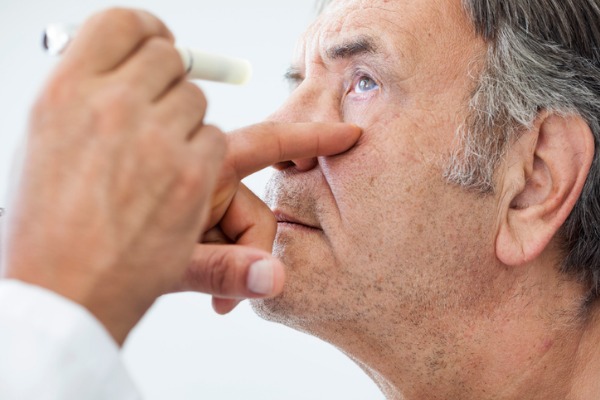
Cataracts – Risk Factors, Symptoms & Treatment
If cataracts eventually become an issue, a surgical procedure may indeed be the best treatment option available.
In the world of health and eye care, cataracts are well-known as one of the major causes of vision loss. However, in nature, a cataract can also be defined as a waterfall, especially a large, cascading one (hence the pic).
Needless to say, this pairing of terms seems quite odd. I’m not too sure where the similarity exists, but it could be because visual cataracts seem to make light scatter, similar to the way water scatters at the bottom of a nature cataract (waterfall)?
Now, I could be totally wrong on this assumption. However, if anyone knows the correct association, please let me know and I’ll gladly revise.
Cataracts (a more thorough explanation):
According to the American Optometric Association, a cataract is “a cloudy or opaque area in the normally clear lens of the eye. Depending upon its size and location, it can interfere with normal vision. Most cataracts develop in people over age 55, but they occasionally occur in infants and young children. Usually cataracts develop in both eyes, but one may be worse than the other.”
To further explain, cataracts occur when the clear lens of the eye(s) becomes yellow. This is typically due to aging, genetics and/or UV exposure (over the course of a lifetime).
Imagine (if you will) looking through a clear lens with crisp, comfortable vision. Now, imagine looking through a lens with a yellowish tint. On top of that, imagine looking through the lens with a yellowish tint, plus faded, dim and/or blurry vision. This is what people with severe cataracts are experiencing.
By the numbers:
- Cataracts are the leading cause of blindness in the world
- They are also the leading cause of vision loss in adults 55 and over
- Cataracts are slightly more common in women than in men
- By age 80, more than half of all Americans will have cataracts
- Acquired (age-related) cataracts account for over 99% of all cases
- Congenital (born with) cataracts account for less than 1%
Risk Factors:
Some of the main risk factors for cataracts include:
- Age
- Exposure to UV rays
- Family history
- Smoking
- Trauma (or eye injury)
In most cases, cataracts are simply a part of the aging process. Fortunately, they tend to progress rather slowly and can be treated accordingly. Genetics (as in most diseases) plays a major role in the severity of cataracts, as does significant exposure to harmful UV rays.
Smoking is a modifiable risk factor involved with cataracts. That said, quitting as soon as possible helps to prevent many associated complications.
Trauma to the eye can also result in an acute forming cataract that should be treated sooner rather than later.
Symptoms:
Some of the main symptoms of cataracts are as follows:
- Difficulty seeing at night
- Blurry vision
- Cloudy vision
- Double vision
- Frequent change in prescription (glasses or contact lens)
- The appearance of “halos” or “starbursts” around lights (worse at night)
- Colors appear less vibrant
If you’re experiencing any of these symptoms, you should schedule a visit to the eye doctor right away.
Treatment Options:
As of right now, there aren’t many treatment options for cataracts. The main idea is to prevent them from occurring altogether. But sometimes that’s much easier desired than achieved. If cataracts eventually become an issue, the best method is to slow them down as much as possible.
Surgery is the best treatment for cataracts when they start to cause vision loss and every day tasks (driving, reading, staying active) become difficult.
Cataract formation may be slowed or prevented with the following eye care techniques:
- Wear UV protection during time spent outdoors
- Increase vitamin C foods (citrus fruits, red bell peppers or a food based supplement)
- Increase carotenoids intake (lutein, zeaxanthin and beta carotene) which come in the form of dark leafy greens, sweet potatoes and orange bell peppers, etc.
- Quit smoking (ask your primary care doctor for help, if necessary)
Live in Your OcularPrime:
In recent years, advancements in surgical technologies have caused the successful treatment of cataracts to become normal. Moreover, surgical procedures can also be delayed until later in life. However, every surgery carries risks (as most people are aware). Make sure to thoroughly consult with your eye doctor before any surgical procedure.
In the meantime, constantly wearing sunglasses can be a pain for some people. If this sounds like you, start by wearing them whenever you can. If you do this often enough, eventually it may become routine.
Also, make sure your sunglasses block harmful UV rays. If your not sure about this strength of your sunglasses, you can take them to your local optometrist for verification.







